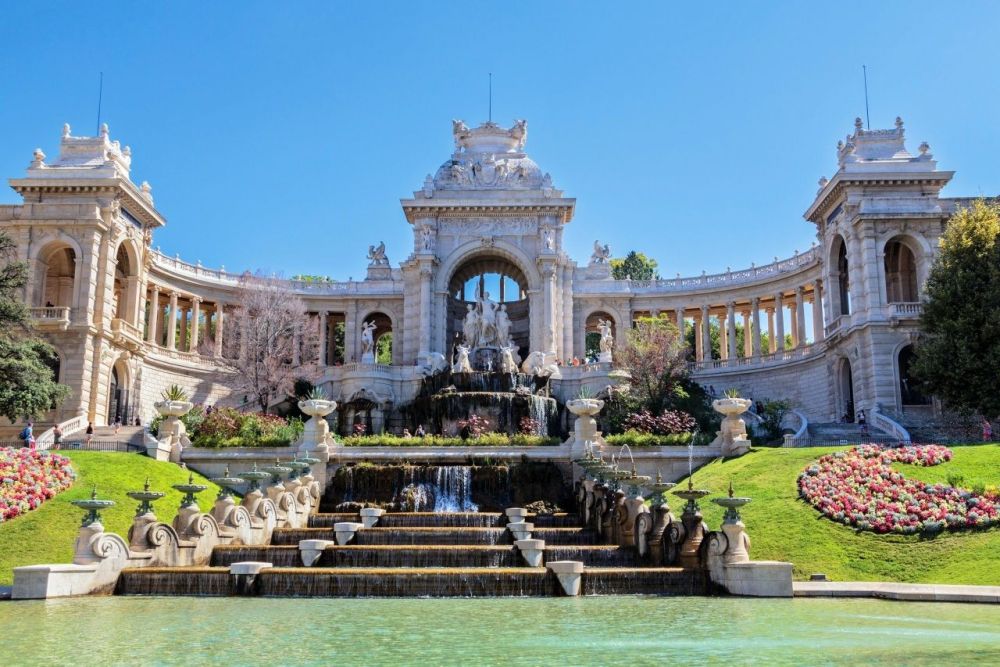

The grandiose edifice of Palais Longchamp, located in the 4th arrondissement of Marseille, France, is steeped in a rich historical context that dates back to the mid-19th century. Conceived as a commemorative monument, it celebrates the engineering milestone of the Canal de Marseille, which was constructed to bring water from the River Durance to Marseille—an event that marked the end of a prolonged water shortage that had plagued the city for centuries.
The foundation of Palais Longchamp dates back to 1839, when the first stone was laid with pomp and ceremony, yet it was not until 1862 that the Palais was inaugurated by Emperor Napoleon III. The structure is a remarkable example of Second Empire architecture, designed by the illustrious architect Henri-Jacques Espérandieu, renowned for his work on other monumental Marseille icons such as the Basilique Notre Dame de la Garde.
In the firmament of Marseille's tourism history, Palais Longchamp has shone brightly as a beacon of culture, art, and leisure. The complex consists of a stunning château, which boasts an intricate façade adorned with statues, columns, and a majestic water feature, alongside two wings that house the Musée des Beaux-Arts (Museum of Fine Arts) and the Muséum d'Histoire Naturelle (Natural History Museum). The presence of these museums has augmented the site's cultural value, drawing art and nature enthusiasts alike.
Connected to the palace is a vast garden, the Parc Longchamp, offering a verdant retreat amidst the urban landscape. Laid out in the classic French style, the gardens serve as a popular gathering spot for locals and tourists who revel in its serene pathways, majestic fountains, and a carousel for children. It has also hosted a variety of cultural events, including open-air concerts and film festivals, further cementing Palais Longchamp's status as a prominent leisure destination.
Tourism at Palais Longchamp, akin to global tourism trends, has faced the unprecedented challenge of the COVID-19 pandemic. However, post-pandemic recovery has witnessed a resurgence in interest towards outdoor and cultural destinations, as travelers seek experiences with ample space and enriched learning opportunities. This trend bodes well for the future of tourism at Palais Longchamp, which offers an ideal blend of open-air environment and cultural immersion.
In an effort to adapt to the changing landscape, Palais Longchamp has leveraged digital technology to enhance visitor experiences. Virtual tours and interactive mobile applications are being developed, allowing guests to delve into the history and art of the palace remotely or enrich their on-site visit with augmented information.
The significance of Palais Longchamp transcends its historical origins, becoming an integral part of the cultural fabric of Marseille. Efforts to preserve the site for future generations include regular maintenance of its structures and gardens, conservation of the artworks within its museums, and the organization of educational programs for young visitors. In doing so, Palais Longchamp continues to affirm its position as a testament to historical ingenuity and a venerable beacon of art and nature in the heart of Marseille.